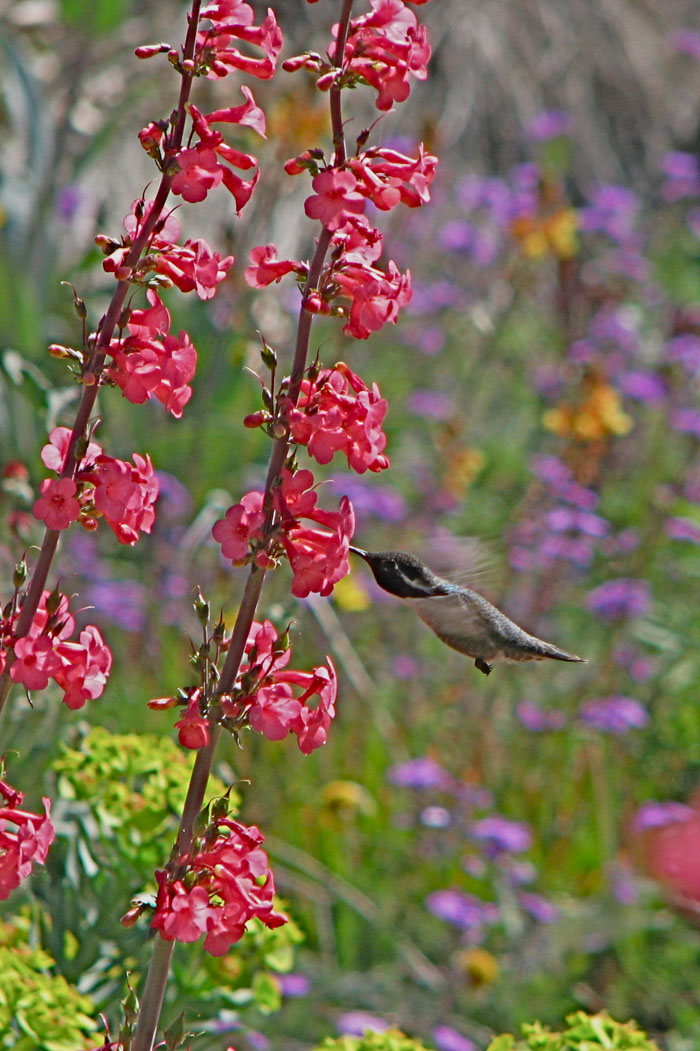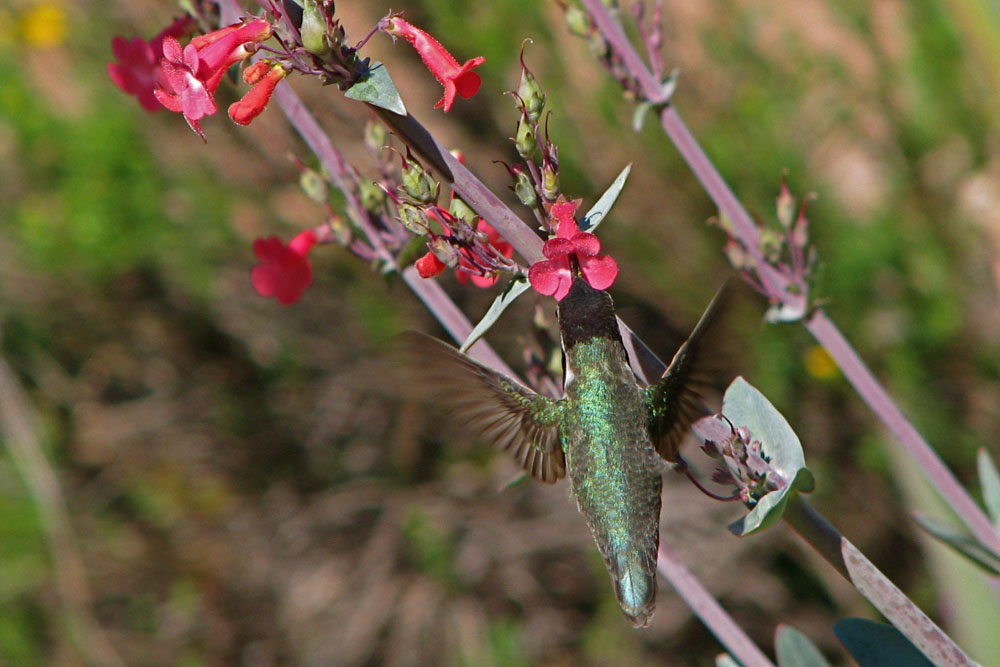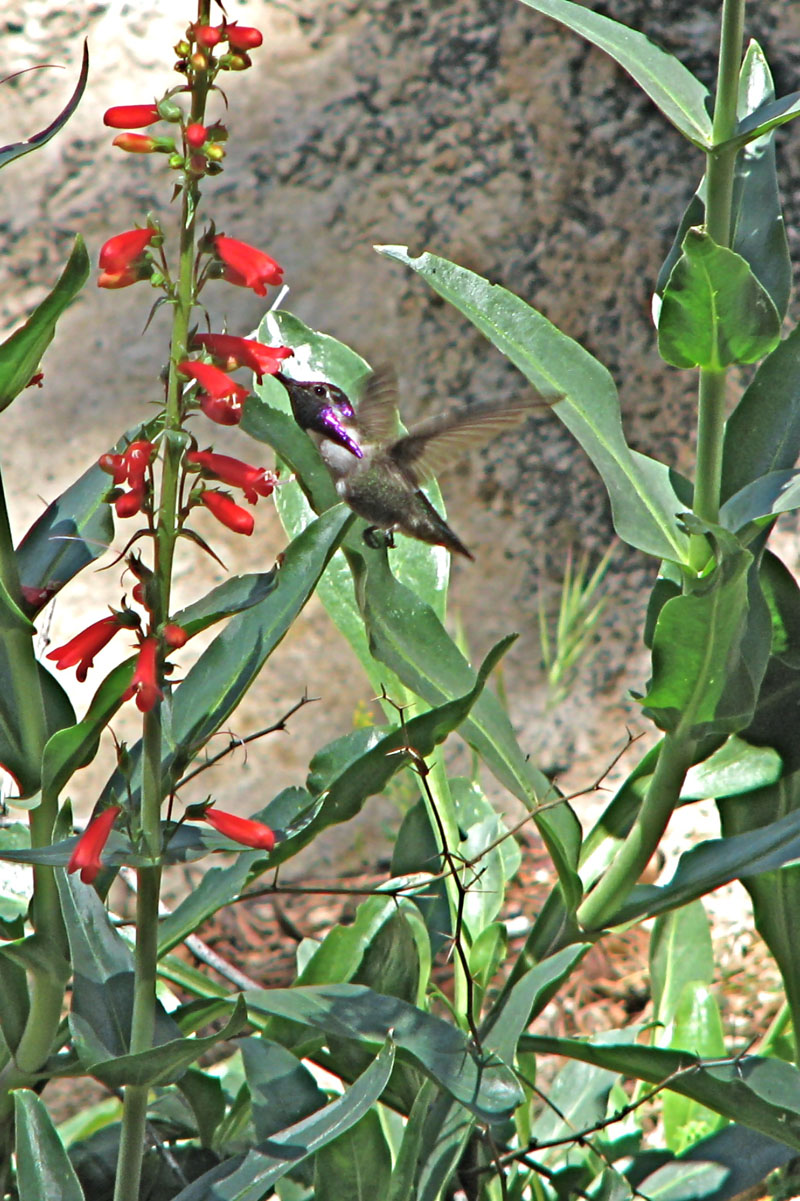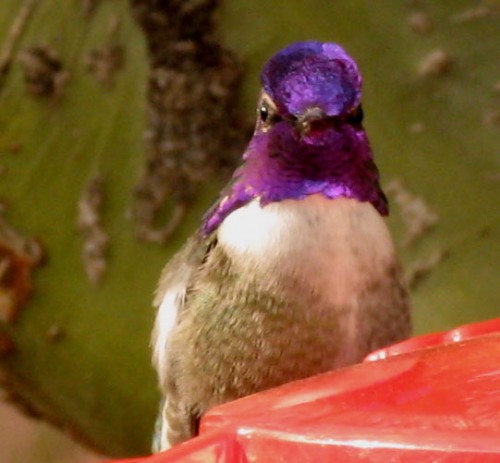Costa’s hummers at Boyce Thompson Arboretum
 One of my favorite places to go in the Phoenix area at any time of year (except perhaps in the heat of summer) is the Boyce Thompson Arboretum. It’s a botanical garden of native and non-native desert plants up in the desert mountains around Superior Arizona about an hour’s drive east of Phoenix. It’s spectacularly sited along craggy Queen Creek gorge at the foot of Picketpost Mountain. And it’s great for plants, birds, walking, picnicking — even shopping, like now when their twice-annual plant sale is going on. If this sounds like an ad, that’s okay, I’m happy to enthuse about the place.
One of my favorite places to go in the Phoenix area at any time of year (except perhaps in the heat of summer) is the Boyce Thompson Arboretum. It’s a botanical garden of native and non-native desert plants up in the desert mountains around Superior Arizona about an hour’s drive east of Phoenix. It’s spectacularly sited along craggy Queen Creek gorge at the foot of Picketpost Mountain. And it’s great for plants, birds, walking, picnicking — even shopping, like now when their twice-annual plant sale is going on. If this sounds like an ad, that’s okay, I’m happy to enthuse about the place.
We made a visit earlier this week: the place is rocking with wildflower color, the penstemons are at their peak, and the aloes are still going; the spring migrant birds are coming in and the residents are singing and nesting like mad. For some reason, male Costa’s hummingbirds — sturdy little desert hummers with bright purple mustaches (in the right light*) — are particularly in evidence; the hens are probably on their nests now. Here are three images E captured of male Costa’s intently working over various penstemon blooms.
Here are three images E captured of male Costa’s intently working over various penstemon blooms.
Three upper photos by E. Shock. Remember to click on each for a slightly larger image.
Hen update: The Stalwart Hen (who you will recall is an Anna’s Hummingbird) is sitting tighter than ever on her tidy nest atop pine cones in the big Aleppo pine. The breezy air has rearranged the branches around her, and although it’s still easy to see her on the nest, it’s tougher than ever to get photos. But, she’s there.
Speaking of Costa’s hummingbirds and hummingbirds in the yard, I regret to report that we are currently not seeing Miss Thang, the female Costa’s who’s been so regular in our front garden. There is one male Costa’s very actively performing display flights on the edge of the property, but he’s currently the one Costa’s individual who we know has stayed the entire season here. We’re hoping Miss Thang (or a suitable replacement!) will be back sometime around the beginning of June, which is when there seems to be an increase in Costa’s in the yard.
*Here’s a bonus shot of just how purple a Costa’s gorget can look in the right light: it’s a head-on view of a Costa’s at one of our yard feeders (photo A. Shock):
